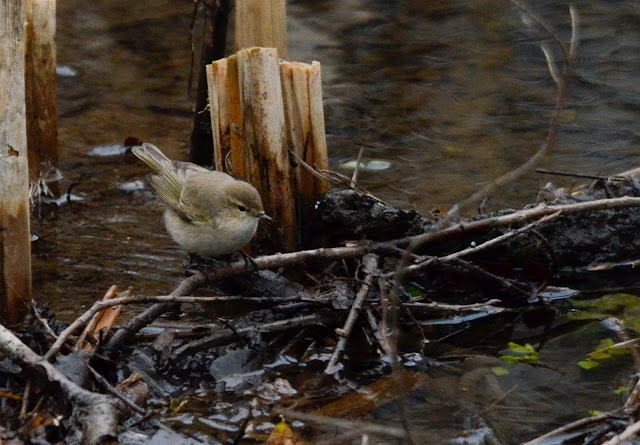After a long week at work I decided that a morning out
birding would be a good way to recharge. After mopping up a few year-list
species at Ogmore I headed to Parc Slip to pay homage to the wintering Siberian
Chiffchaff which had been found over Christmas.
I nipped down the side of the centre to get a good view of the reedbed
and feeders, and within a couple of minutes the little fella flitted into view
from the reeds, and twice came out foraging on the mud. It was a typically
dingy January day and my ISO was cranked high, so I managed nothing more
satisfactory than the two below.
An article on Bird Guides describes identification of
tristis on the following criteria:
• Absence of
olive in the crown and mantle
• Absence of
yellow away from the underwing
• Presence
of a grey-brown or pale brown hue in the upperparts
• Presence
of warm buff in the supercilium and ear-coverts
• Presence
of buff at the breast-sides/flanks
• Very
black-looking bill and legs
• A thin,
piping near-monosyllabic Bullfinch-like or Dunnock-like call
• A song
markedly different from western Chiffchaff's.
Siberian chiffchaff breeds in Siberia, east of the Pechora
River and winters in the lower Himalayas. For now at least, tristis is
maintained in P. collybita by most checklists, but at some point this may become an ‘armchair’ tick if it
separated out as a different species.
After admiring the bullfinches on the feeders, I headed to
the first hide and bumped into Nick. We caught up, and I hoovered up a few more
for the old year list, including only my first coot and grey heron of the year,
and a few others like teal, wigeon, and little grebe.


No comments:
Post a Comment
Note: only a member of this blog may post a comment.